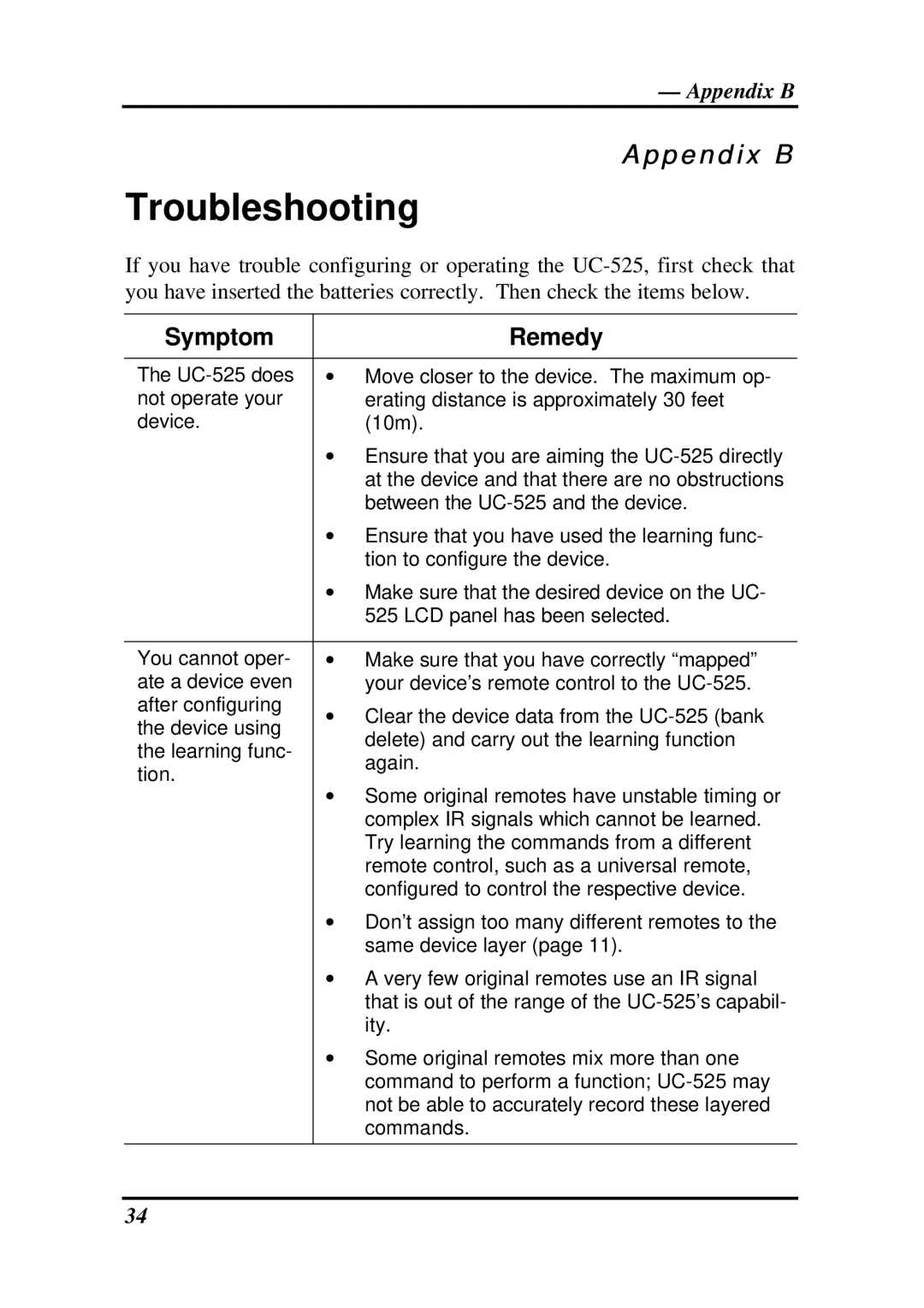
— Appendix B
Appendix B
Troubleshooting
If you have trouble configuring or operating the
Symptom | Remedy | |
|
| |
The | ∙ Move closer to the device. The maximum op- | |
not operate your | erating distance is approximately 30 feet | |
device. | (10m). | |
| ∙ Ensure that you are aiming the | |
| at the device and that there are no obstructions | |
| between the | |
| ∙ Ensure that you have used the learning func- | |
| tion to configure the device. | |
| ∙ Make sure that the desired device on the UC- | |
| 525 LCD panel has been selected. | |
|
| |
You cannot oper- | ∙ Make sure that you have correctly “mapped” | |
ate a device even | your device’s remote control to the | |
after configuring | ∙ Clear the device data from the | |
the device using | ||
delete) and carry out the learning function | ||
the learning func- | ||
again. | ||
tion. | ||
∙ Some original remotes have unstable timing or | ||
| ||
| complex IR signals which cannot be learned. | |
| Try learning the commands from a different | |
| remote control, such as a universal remote, | |
| configured to control the respective device. | |
| ∙ Don’t assign too many different remotes to the | |
| same device layer (page 11). | |
| ∙ A very few original remotes use an IR signal | |
| that is out of the range of the | |
| ity. | |
| ∙ Some original remotes mix more than one | |
| command to perform a function; | |
| not be able to accurately record these layered | |
| commands. | |
|
|
34
